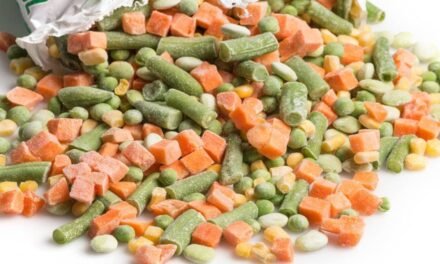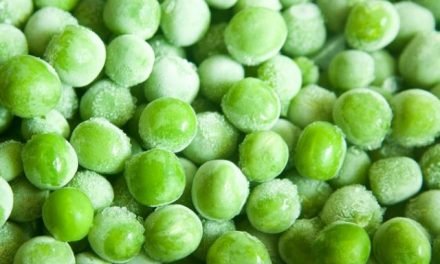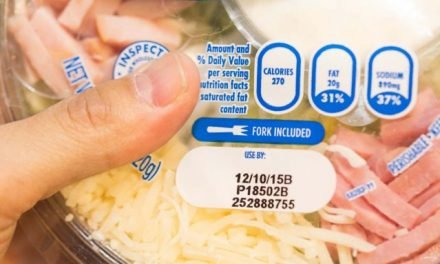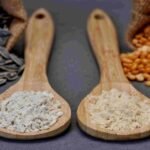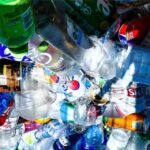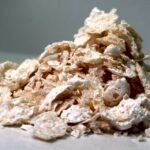Commercial freezing of food is accompanied by physical and chemical changes. Let us understand these changes/ happenings during commercial freezing and frozen storage, writes O S Gautam.
Commercial freezing of food is accompanied by physical and chemical changes. To understand these changes/ happenings during commercial freezing and frozen storage let us have a look into the freezing process first.
Table of Contents
Freezing can be thermally divided into three phases
- From ambient temperature or the product temperature to 0 degree Celsius.
- From 2-degree water to 0 degree Celsius ice or equilibrium phase.
- From 0-degree ice to frozen temperature (–18 degree Celsius).
The first phase is very fast as the energy is fully used to bring down the temperature of the product only whereas in phase second, 2-0 degree, water which is still in liquid phase gets converted to ice – a solid phase. This phase is slower and more energy-intensive. One kilogram of water needs to give up 80 kilocalories of heat, in order to become ice (called latent heat) and the same thing happens in its reverse process when a product is thawed. Each kg of ice will need 80 kilocalories of heat to melt into 0-degree water. Maximum energy is used in this phase.
In the third phase energy is used merely to lower temperature from 0 degree to –18 degree; the desired freezing temperature in the product. Freezing starts from surface and progresses gradually to the core of the product, therefore heat transfer slows down with the progression of conversion of water into ice from the surface to inner layers. As ice is not a good thermal conductor the freezing process slows down and takes much longer time to bring down product temperature from 0 degree Celsius to –18.
Physical Changes in Food During Commercial Freezing
Physical Hardening of Product
As most of the food have 80 % or more water content which gets converted into ice and ice being a solid form of water though chemically same (H2O), it gets hardened. Hardening is attributed to the formation of ice crystals that are interwoven with each other very strongly and provide strength and hardness to ice and the product.
Expansion During Commercial Freezing of Food
There is an expansion in volume by 6 to 8 % when water is converted into ice. This expansion is due to crystal formation and size of ice crystals is directly related to freezing temperature and rate of freezing. When the temperature is very low, rate of freezing or the rate of heat exchange is much faster, the ice crystals formed are smaller in size and fitted more compactly, therefore less expansion in the tissue cells and the reverse happens when the freezing temperature is high. Ice crystals formed during slow freezing are big and hence expansion in the product is much higher.
This expansion may damage tissue cells and distort and deform the product sometimes. Damage in the tissues due to expansion results in higher drip loss or loss of biological exudates, nutrients and weight loss. Maximum water says 80 % of it is converted into ice in the range of 0 degrees to -5 degree Celsius. Therefore an important factor to remember is that freezing has to be fast or quick enough to cross this CRITICAL TEMPERATURE RANGE so that least damage is done to the quality of the product. Also one has to remember that when very rigid containers, for example, made from glass or hard plastic, are used for packing and freezing, they may get damaged and broken as they cannot expand.
Freezing Makes a Product Lighter Density of ice (0.9) is lesser than pure water (1) hence on freezing ice and the product becomes lighter. That is the reason ice floats in the water.
Freezing Burn and Dehydration
With the drop in the temperature, the air loses its capacity to hold moisture. As more and more moisture or water vapours gets separated from the air with the reduction in the temperature air gets drier and drier. The separated water vapours get converted into frost. Therefore cold air inside the freezers and frozen cold stores is dry and has a strong affinity with moisture. The air when and where it has access to product starts withdrawing water from the product and the spot or area from where water is withdrawn gets dehydrated and appears as a white spot called freezer burn.
Unpacked foods are more susceptible to freezer burns. However, some moisture is lost from the product surface, which attributes to some loss in the weight of product called freezing loss.
Longer freezing time will result in larger freezing losses – IQF type of freezing results in 2 to 4 % however slower methods may contribute to even 10% or more weight loss.
Change in the Colour of during commercial freezing of Food
Freezing may also affect the natural colour of a product due to the difference in light diffraction of ice than water, however, this change in colour is reversible when the product is thawed. Improper freezing results in active enzymes and oxidative processes. It also denatures pigments and associated proteins. Proteins are part of pigment complexes and they get denatured by cooking, or by acids (change of pH either due to incorporation of acidic elements or by biochemical processes or by bacterial metabolism) or by chemical reactions. These changes are permanent and irreversible.
Myoglobin, the red pigment in meats gets oxidized either during freezing or prolonged frozen storage if not packaged properly, or if the packaging is of poor quality and pervious to atmospheric oxygen or if the packaging is not sealed properly or it gets damaged during handling. Vegetables have a very high level of enzymes and some of them like katalases and peroxydases are hard in nature and are active in slow speed in the frozen conditions too. It is therefore essential that vegetables are flash cooked or blanched before freezing in order to inactivate enzymes.
Discolouration in some fruits and vegetables is more when they are chopped into portions or slices, as they have a high level of enzymes called polyphenolase, which get converted into melanin when it comes in contact of oxygen i.e. blackening of potatoes, brinjals and apples. Proper packing and freezing will arrest this phenomenon.
Seafoods especially crustaceans also have high levels of this enzyme (polyphenol oxidase or PPO) and if they are not frozen and stored at right temperatures or subjected to temperature abuse, they undergo this process of MELANOSIS and render the product with black spots. Although melanin formation does not affect the edible qualities of food, it certainly impairs its visual quality.
Some of the fish especially fatty fish develop a red/yellow discolouration or rust during prolonged storage and temperature abuse.
Freezer Burn and Dehydration
With the drop in the temperature, the air loses its capacity to hold moisture. As moisture or water vapours get separated from the air and condense into frost, the air gets drier and drier and has a strong affinity with water. Therefore the air as and when gets access to the product, starts withdrawing water from the product and the spot or area from where water is withdrawn gets dehydrated and appears as white spot. The affected area can be removed and the product can be used as it does not affect the palatability of the remaining food as such.
Crystallisation of Water Vapours in Frozen Food Products
It is observed in packaged frozen foods. When such frozen food is kept cold storage or in the sale outlets shelf for some time, a lot of ice in the form of white crystals or frost is seen inside the packs. Water evaporates in all temperatures even in frozen condition. Full water contents in a product are frozen at –60 degree Celsius temperature and at –18 degree around 10 % water is in an unfrozen state. This water keeps evaporating from the surface of the product.
However the rate of evaporation depends on the product temperature, storage temperature and wholesomeness of the product itself. Higher the product temperature, the higher will be evaporation. Higher the surface area, higher will be evaporation. Higher the cut surface, higher will be evaporation. Evaporated water vapours get converted into ice inside the packaging, as they are not allowed to escape out by packaging. It becomes profuse when product is subjected to temperature abuse and temperature fluctuations. This phenomenon can be arrested only by proper freezing (to –18 degree Celsius in the core of the product) and storage of frozen product in the cold store and by maintaining cold chain throughout the distribution and sales chain.
Recrystallisation of Ice Inside the Frozen Food
Biological and Chemical Changes in Food During Commercial Freezing
The biological changes include reduction of microflora on the surface and interior of the food. Freezing has an inhibiting effect on the metabolism and reproduction of microbes. As the water gets converted into ice and it is not freely available to microbes for their metabolic and physiological activities, they starve and some of them either perish or go into a dormant stage. However as and when they get the right environment like temperature abuse anywhere during the cold chain, they get active and multiply. Due to this effect reduction in the bacterial load during freezing is witnessed however freezing is not a sterilization process.
Break Down of Glycogen
Once an animal dies or vegetable and fruit is plucked from the plant, its temperature rises. The breakdown of glucose and release of heat and energy continues for some time. As released energy is not utilized for any physical or metabolic activity, it is used as heat, which accelerates the deterioration process. Moreover in the animals, this process ends up in the formation of lactic acid, which makes the muscles slightly acidic, which sets in RIGOR MORTIS. This process is at its peak in the range of –2 to –5 degree Celsius.
Protein Denaturation
Proteins get denatured due to poor freezing and storage conditions. As proteins bind a lot of water with them, they lose this capacity on their denaturation hence product loses its juiciness and capacity to swell.
Loss of Electrolytes
Slow freezing gives sufficient time for water in the intercellular space to get separated from the colloidal solution or plasma and get converted into pure ice. This phenomenon creates an osmotic imbalance, as the remaining solution becomes highly concentrated with dissolved salts. As a result, intracellular water starts flowing out along with nutrients, which drains out during the thawing process.
Conclusion
It is therefore imperative to freeze a product quickly to –18 degree Celsius and store it at the same temperature throughout the cold chain.
ALSO READ


